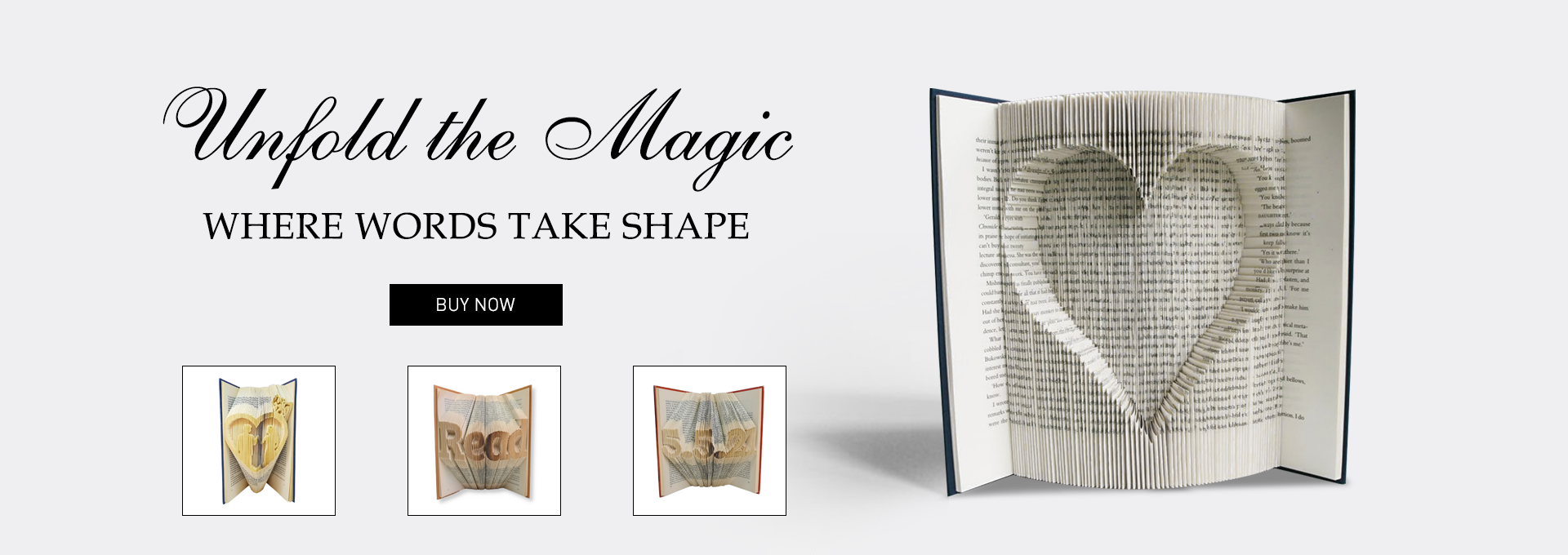Folding Words Into Art: The Magic of Book Folding

In the world of craft and creativity, there exists a unique and enchanting practice known as book folding. This art form transforms ordinary books into stunning three-dimensional sculptures that speak to the imagination and provide a new life to forgotten pages. Each fold, carefully executed, reveals a hidden melody of shapes and letters, turning the written word into a beautiful visual experience.
Book folding is more than just a technique; it is a celebration of literature and an expression of artistry that bridges the gap between reading and creativity. As we delve into this captivating craft, we uncover the joy of taking a simple book and, through careful manipulation, transforming it into a piece of art that can be cherished and displayed. Whether you are an experienced artisan or a curious beginner, the allure of folding words into intricate designs invites us all to explore the magic hidden within the pages of books.
The History of Book Folding
Book folding has a rich history that traces back to ancient civilizations, where the art of manipulating paper and text emerged as a form of creative expression. Early examples can be seen in cultures that valued the written word, using books not just for reading, but also for decorative purposes. As paper became more accessible, the practice evolved, allowing artists and book lovers to experiment with different techniques and designs.
During the 18th and 19th centuries, book folding gained popularity as a craft among the middle class, who sought to personalize their literary collections. This era saw the rise of ornamental book folding, where people would create intricate patterns and shapes, often as gifts or as a means of showcasing their literary treasures. The techniques began to take shape as more people became familiar with them, leading to a unique blend of artistry and literature.
In the modern era, book folding has experienced a resurgence, thanks in part to social media platforms that highlight creative hobbies. Contemporary artists have taken the traditional techniques of book folding and infused them with new life, creating stunning three-dimensional artworks from old books. This revival has not only preserved the craft but also expanded its possibilities, inviting a new generation to explore the delicate balance of art and literature through the folds of a page.
Techniques and Tools
To begin with, book folding requires some essential techniques that can greatly affect the quality of the final artwork. One of the most common methods is the step-by-step folding technique, where each fold is carefully measured and executed to create precise shapes. This method demands patience and attention to detail, as even a slight miscalculation can disrupt the entire design. Another popular technique is the use of patterns or templates, which can simplify the process by providing clear guidelines for where to make each fold.
When it comes to tools, a good quality bone folder is indispensable. This tool helps create clean and sharp creases, ensuring that each fold is smooth and well-defined. Additionally, a ruler and a pencil are crucial for measurement and marking the fold lines accurately. Many book folders also find utility in craft knives to trim the pages before folding, allowing for more intricate designs. Having a reliable cutting mat is also important to protect surfaces and keep everything neat.
Finally, choosing the right type of book can greatly enhance the final piece. Thicker pages provide more stability and allow for bolder designs, while thinner pages may be better suited for more delicate patterns. Old hardback books are often favored for their durability and ability to hold intricate folds. Exploring various paper types and thicknesses can open up new creative possibilities, making each project unique and personal.
Creating Your Own Book Art
Embarking on your own book folding journey can be both a delightful and rewarding experience. To start, choose a book that you are willing to transform. It’s best to select one with thicker pages, as they will hold the folds better and create a more impactful visual. Once you have your book, decide on a design or pattern. There are many templates available online, ranging from simple to intricate designs. http://www.bookfolding.store/ can download these templates and start planning how you will fold each page.
Before you begin folding, gather the necessary supplies. All you will need is a ruler, a pencil, and a sharp crafting knife or scissors for precise cuts. Mark the folding points on each page carefully according to your chosen design. It is essential to measure accurately to ensure that all folds align correctly, leading to a polished final product. Take your time during this step, as accuracy in marking will greatly impact how well your art piece turns out.

Once your pages are marked and ready, it is time to make the folds. Carefully fold each page at the marked points, pressing down firmly for clean edges. Be patient and work methodically to avoid mistakes. As you progress, you will start to see your design emerge, and the anticipation of the final piece will encourage your precision. Once you have completed all the folds, stand back and admire your book art. You have transformed a simple book into a beautiful artwork that can be displayed or gifted, showcasing the magic of book folding.
